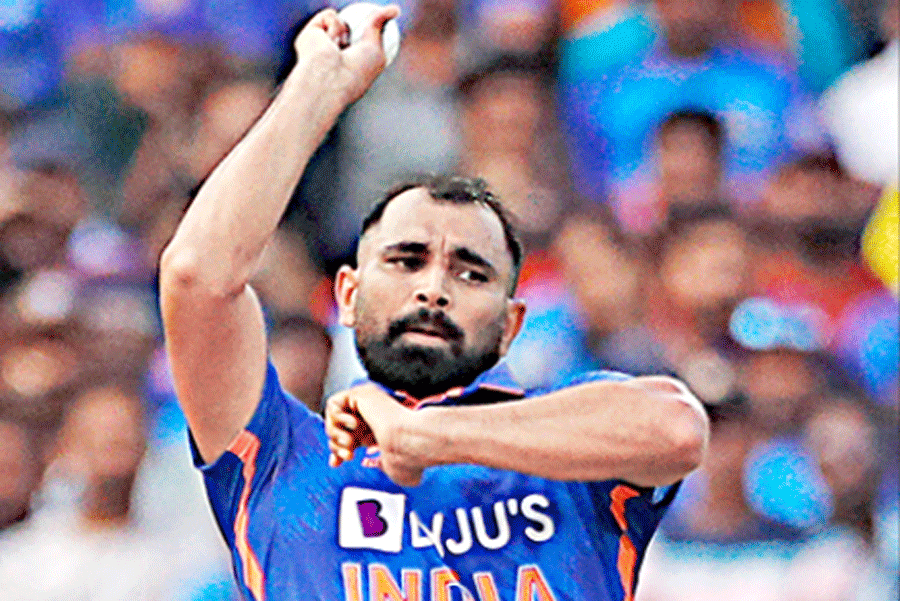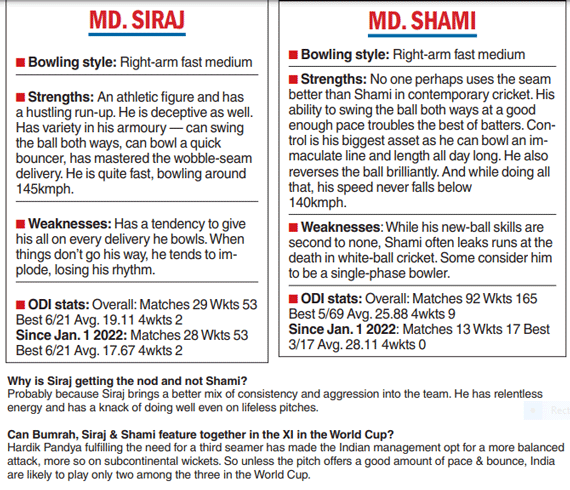Mohammed Siraj’s tough decision to stay back in Australia in spite of his father’s demise during India’s 2020-21 tour not just underlined his strong character. It also benefited Team India hugely as the pacer, leading the attack in the absence of the injured big names, turned out to be their highest wicket-taker with 13 scalps in that unforgettable 2-1 Test series win.
Since that tour Down Under, Siraj just hasn’t looked back. His steady progress first cemented his place in the Tests and ODI squads and then culminated in his match-winning spell (6/21) which helped India to decimate Sri Lanka and bag their eighth Asia Cup crown in Colombo on Sunday.
Consistency has been one key facet of Siraj’s game, making him one of India’s regulars in the 50-over format over the past year. He has evolved too as a bowler as the just-concluded Asia Cup final proved his ability to swing and move the ball both ways, his control over swing and over his lengths.
Of course, Sri Lanka’s batting on Sunday was pathetic, but no credit can be taken away from Siraj as he proved how devastating he could be if overhead conditions offer quicks with some amount of assistance. Even in conditions that haven’t been pacer-friendly, Siraj has managed his lengths quite well, steadily making himself a complete bowler.

Mohammed Shami. File photo
Skipper Rohit Sharma and head coach Rahul Dravid preferred Siraj over a far more experienced Mohammed Shami to share the new ball with Jasprit Bumrah in this Asia Cup. The response from Siraj couldn’t have been any better.
After such a performance, it’s really difficult for India to not make Siraj a regular in the XI even in the home ODIs against Australia beginning on Friday and the upcoming World Cup thereafter.
The quality and experience of Shami, who featured against Nepal and Bangladesh in this Asia Cup, is invaluable. But that said, Siraj seems to have earned a permanent slot in the XI.
Shami’s use of the seam and the reverse swing he can obtain even in batsman-friendly conditions is his big advantage, but his tendency to drift off the line and be erratic at times makes him expensive and that can really hurt the side. Shami’s economy rate in a few ODIs against Sri Lanka, New Zealand and Australia early this year wasn’t at
all impressive.
In fact, had Bumrah been available for selection, Shami could well have been out of the XI then itself.
“The team management wanted to try Siraj out as Bumrah’s new-ball partner in the Asia Cup, and he came out with flying colours. Healthy competition within the side always helps --- each and every player now, regardless of the seniority factor, will be on their toes.
“But Siraj’s strides don’t mean Shami gets pushed to the background. The team management certainly values his experience and based on the conditions, Shami should make his way back (in the XI),” a BCCI source said on Monday.
“It takes a lot to earn yourself a berth in the XI in place of someone like Mohammed Shami,” former India fielding coach R. Sridhar, who has witnessed Siraj since the 29-year-old quick’s early days with the national team, told The Telegraph.
“That’s where lies Siraj’s credit. He’s a lot more consistent now and has been able to develop a very good outswinger, which makes him even more sharper at present. Besides, he’s fresher and has fitter legs, which give him an advantage (over Shami).
“But, in a long tournament like the World Cup, it’s difficult for the same one or two quicks to feature in all the games. So, rotation should bring Shami back in action.”
The possibility of Bumrah, Siraj and Shami playing in tandem appears slim as all-rounder Hardik Pandya has been doing the third seamer’s job fairly well.
“At Eden Gardens, where the pitch aids quicks, the trio can play together.
“Also, with the World Cup beginning in October, the pitches will be fresh and a few more of them could provide some assistance to the fast bowlers,” Sridhar pointed out.











